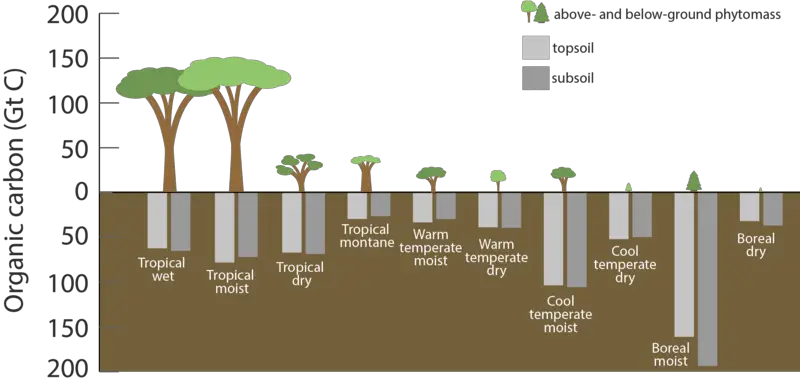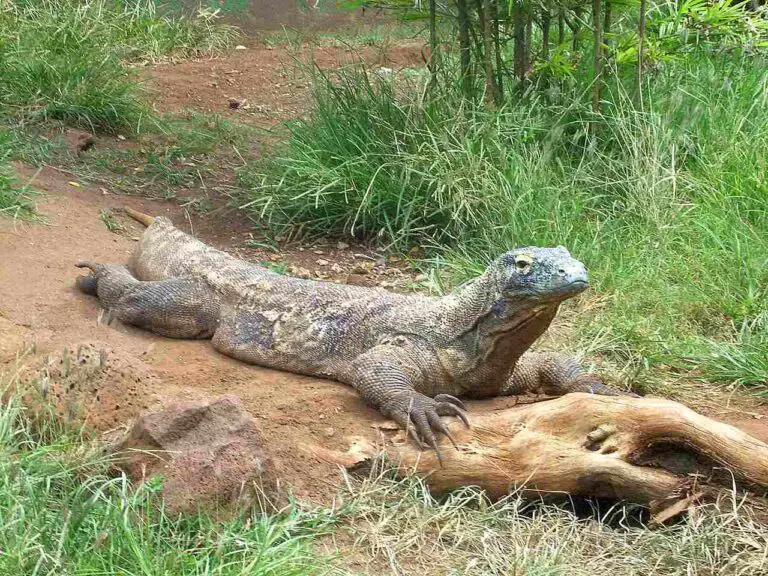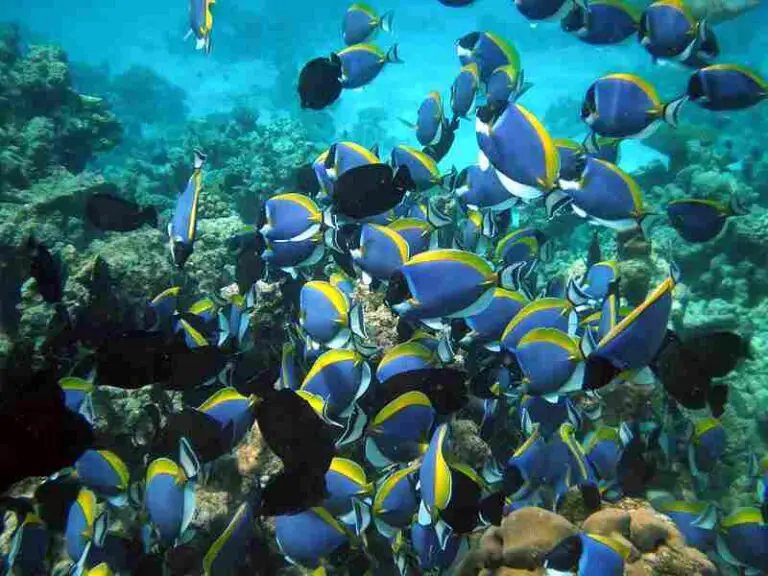5 Carbon Cycle Examples Explained
Carbon cycle examples are; limestone chemical weathering by co2-rich carbonic acid, photosynthetic carbon-capture and biomass production, bioenergy and carbon dynamics in feeding and respiration, fossil fuel combustion with carbon thermal decomposition, and carbon release by microbial decomposition.
This article discusses carbon cycle examples (that is; examples of processes of carbon cycles), as follows;
1). Limestone Chemical Weathering by Carbonic Acid (as one of the Carbon Cycle Examples)
The carbon cycle is driven by both biotic and abiotic components of ecosystems, that work to capture, store (or sequester), and release carbon into the environment. An example of the abiotic components that drive the carbon cycle is limestone.
Limestone is involved in the carbon cycle as a natural medium of carbon storage. The formation of this rock can be traced to processes involving carbonaceous sediments and organic materials or biomass; whereby these sediments and materials accumulate and transform into the fine-grained earth material known as limestone [8].
The chemical weather reaction of limestone is a combined dissolution and carbonation reaction, represented in a series of equations as follows;
CO₂ + H₂O → H₂CO₃---(1)
H₂CO₃ + CaCO₃ → Ca(HCO₃)₂---(2)
Where equation one (1) shows the dissolution of carbon dioxide in rainwater (or other form of precipitation) to form carbonic acid (H₂CO₃), and equation two (2) shows the reaction of this carbonic acid with limestone as it flows across the Earth's surface, to yield calcium bicarbonate (Ca(HCO₃)₂) [3].
Carbonic acid weathers limestone through carbonation reactions with calcium carbonate (CaCO₃) to yield bicarbonate which is soluble and easily transported in water.
This process is very crucial to the carbon cycle in areas rich in carbonate rocks and minerals, as it controls the transition of carbon in such areas from one form to another.
When bicarbonate in solution precipitates to form evaporite rocks, atmospheric carbon (which was involved in the formation of carbonic acid) becomes sequestered in the precipitate. Similarly, evaporation and chemical reaction can cause carbon dioxide to be released into the atmosphere from carbonate rocks and their solutions.
The continuous process of carbon-recycling between the atmosphere and rocks can be seen as a full carbon cycle, although in complex ecosystems, it may be simply part of a larger and more-elaborate cycle.
2). Photosynthetic Carbon-Capture and Biomass Production
The process of photosynthesis in the carbon cycle is a natural carbon capture and storage process that utilizes solar energy, carbon dioxide and water to produce both bioenergy and biomass in autotrophic organisms [7].
Photosynthesis can be described as a pioneering process because it usually takes a foremost spot in carbon cycles and food chains.
The carbon cycle produces biomass through photosynthesis, which can occur in all biomes including freshwater-aquatic ecosystems and marine photic zones. This biomass is usually a combination of carbon, oxygen, hydrogen and other elements that constitute organic compounds.
Autotrophic organisms that make photosynthesis happen, are generally equipped with pigmentation which absorbs light photons and uses electromagnetic waves from the Sun to facilitate photochemical reactions.
These organisms include algae, vascular plants and photosynthetic bacteria, which act as producers that introduce food (biomass) and energy into the ecosystem as illustrated by food chains and food webs, as well as by energy and biomass pyramids respectively.
In terrestrial ecosystems like forests and tundras, an overwhelming majority of producers are vascular plants, and they constitute a major portion of total biomass in such biomes, alongside bryophytes and lichens.
Photosynthesis causes recycling of carbon by capturing and re-using atmospheric carbon that has been released as waste from combustion and biodegradation processes, among others occurring on the Earth's surface.
It is also a primary driver of carbon storage or sequestration in soils and vegetation.

3). Bioenergy and Carbon Dynamics in Feeding and Respiration (as one of the Carbon Cycle Examples)
Both feeding and respiration are carbon cycle processes and can co-dependently represent an example of a carbon cycle in which bioenergy is being recycled along with carbon.
The feeding process in the carbon cycle represents carbon assimilation by living organisms in the form of food (which comes from carbon-rich organic sources).
Feeding is not a carbon-transformation process in the carbon cycle, but rather signifies energy transfer in the form of carbon-rich organic molecules consumed as food.
In the food chain, feeding dominates the metabolic processes that occur from trophic level 2 upward, as heterotrophic animals are unable to produce their own food from sunlight like the autotrophs.
When food is consumed, the heterotrophic consumers acquire energy for growth and metabolic activities, one of which is respiration.
Respiration in the carbon cycle is a gaseous-exchange process that occurs between plants, animals, soils; and the atmosphere.
Feeding releases carbon dioxide in subsequent metabolic processes like respiration, excretion and biodegradation; because these processes are linked to the breakdown of organic matter.
During respiration, organic molecules consumed as food are broken down to yield carbon dioxide which goes back to the atmosphere. On subsequent photosynthetic capture and re-use of this gas, a full carbon cycling loop is established.
The scale of feeding and respiration is proportional to the amount of carbon that is being recycled in a given ecosystem, as well as that which is contained in soil [5] [6].
4). Fossil Fuel Combustion with Carbon Thermal Decomposition
Fossil fuel combustion in the carbon cycle is a chemical reaction whereby organic molecules are broken down to release carbon-rich greenhouse gases into the atmosphere, along with thermal energy.
Combustion is a decompositional process because it leads to chemical disintegration. It may also be described as a form of thermal decomposition, as it is driven partly by the application of heat.
Fossil fuels like coal and petroleum are particularly rich in carbon, as they come from organic matter that has been subjected to long-term burial and alteration. On thermal decomposition, these fuels release their carbon into the environment in any of various forms including carbon dioxide and carbon black, or soot [1].
Urban areas and other regions with prominent manufacturing and power plant-operations, have their carbon cycles dominated by combustion processes, which may also pose risks of environmental degradation by soil, water and air pollution.

5). Carbon Release by Microbial Decomposition (as one of the Carbon Cycle Examples)
Carbon is released during decomposition as a result of the breakdown of organic molecules by microbes like bacteria.
Microorganisms release carbon dioxide in the course of their metabolic activities, which include enzymatic degradation of organic matter.
Microbial decomposition removes carbon from the atmosphere when it involves organic carbon-consumption, which is the direct assimilation of organic materials by heterotrophic microbes, rather than its breakdown and transformation to nutrients [5].
Soil respiration is driven in part by the activities of microbes, which causes soil organic carbon to be released [2]. As a result, less microbial activity in carbon-rich soils results in higher rates of carbon storage [4].
Conclusion
Carbon cycle examples are;
1. Limestone Chemical Weathering by Carbonic Acid
2. Photosynthetic Carbon-Capture and Biomass Production
3. Bioenergy and Carbon Dynamics in Feeding and Respiration
4. Fossil Fuel Combustion with Carbon Thermal Decomposition
5. Carbon Release by Microbial Decomposition
References
1). Atiku, F.; Mitchell, E. J. S.; Lea-Langton, A. R.; Jones, J. M.; Williams, A.; Bartle, K. (2016). "The Impact of Fuel Properties on the Composition of Soot Produced by the Combustion of Residential Solid Fuels in a Domestic Stove." Fuel Processing Technology 151:117-125. Available at: https://doi.org/10.1016/j.fuproc.2016.05.032. (Accessed 30 April 2023).
2). Bardgett, R. D.; Freeman, C.; Ostle, N. J. (2008). "Microbial contributions to climate change through carbon cycle feedbacks." ISME J. 2008 Aug;2(8):805-14. Available at: https://doi.org/10.1038/ismej.2008.58. (Accessed 30 April 2023).
3). Carmi, I.; Kronfeld, J.; Moinester, M. (2019). "Sequestration of atmospheric carbon dioxide as inorganic carbon in the unsaturated zone under semi-arid forests." Available at: https://doi.org/10.1016/j.catena.2018.09.042. (Accessed 30 April 2023).
4). Cho, R. (2018). "Can Soil Help Combat Climate Change?" Available at: https://news.climate.columbia.edu/2018/02/21/can-soil-help-combat-climate-change/. (Accessed 30 April 2023).
5). Gougoulias, C.; Clark, J. M.; Shaw, L. J. (2014). "The role of soil microbes in the global carbon cycle: tracking the below-ground microbial processing of plant-derived carbon for manipulating carbon dynamics in agricultural systems." J Sci Food Agric. 2014 Sep;94(12):2362-71. Available at: https://doi.org/10.1002/jsfa.6577. (Accessed 30 April 2023).
6). Govind, A.; Kumari, J. (2014). "Understanding the Terrestrial Carbon Cycle: An Ecohydrological Perspective." International Journal of Ecology 2014(4):1-18. Available at: https://doi.org/10.1155/2014/712537. (Accessed 30 April 2023).
7). Larkum, A. W. (2010). "Limitations and prospects of natural photosynthesis for bioenergy production." Curr Opin Biotechnol. 2010 Jun;21(3):271-6. Available at: https://doi.org/10.1016/j.copbio.2010.03.004. (Accessed 30 April 2023).
8). Li, Y.; Yin, J.; Wang, Z. (2022). "Lithofacies Characteristics and Controlling Factors of Fine-Grained Sedimentary Rocks in the Lower First Member of the Shahejie Formation in the Northern Lixian Slope of Raoyang Sag, China." Minerals 12(11):1414. Available at: https://doi.org/10.3390/min12111414. (Accessed 30 April 2023).




